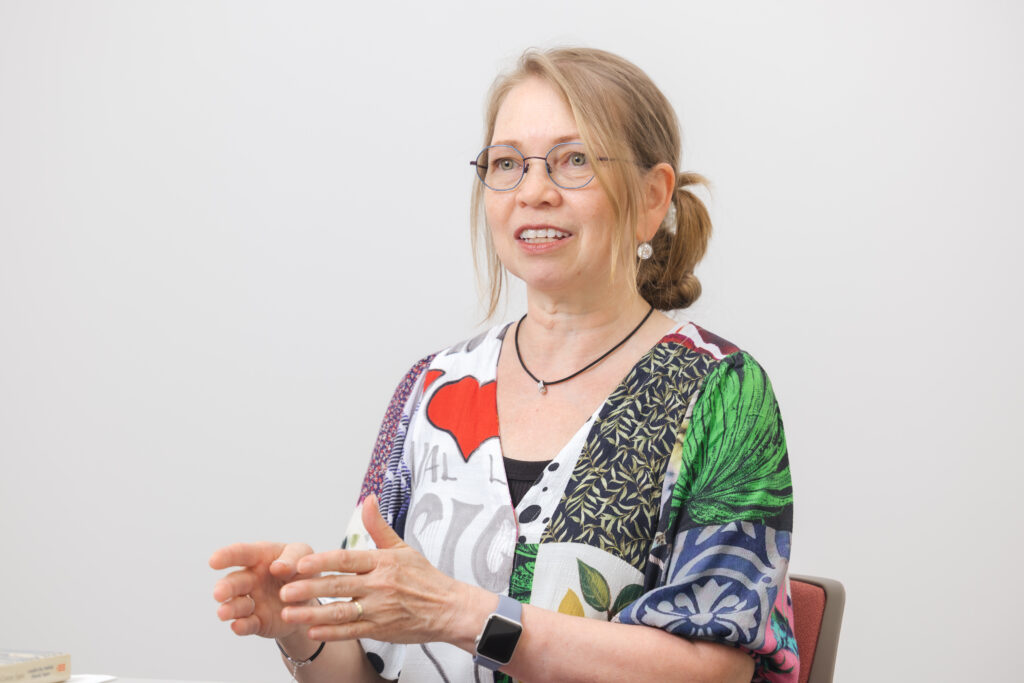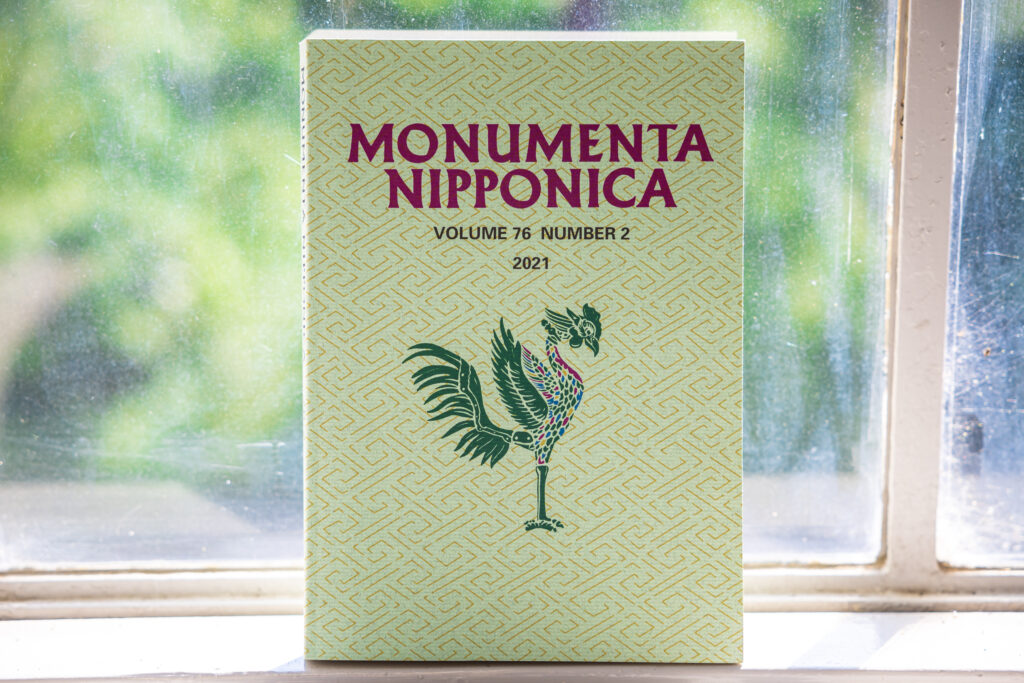
Professor Bettina Gramlich-Oka in the Faculty of Liberal Arts pursues various research topics, all centered on the history of Tokugawa Japan, such as gender, economic thought, and culture. Her work in digital humanities lets her combine these interests. With the help of digital tools, she is working to expand the possibilities for historical research.
My research focuses often on the lives of women during the Tokugawa period in Japan. When examining premodern Japanese history, research on male figures and their relationships is abundant. As a response to this, I aim to be more inclusive in my research. Therefore, in my work on the records of one family, for instance, I pay attention to the female members of the household. In recent years, I focus on the family of the poet and scholar Rai San’yō, the author of Nihon Gaishi (Unofficial History of Japan). For this project, I work on both his parents, Rai Shunsui and Rai Shizu, equally. One of my objectives is to analyze the two individual diaries of the parents wherein they write about their daily lives and their social relations. The wealth of information we gather by investigating both diaries together is highly illuminating and advances our understanding of a household during the Tokugawa period. This investigation is further enhanced when we make use of digital tools, by which we can create and analyze dynamic visualizations of events and exchanges by household members and their social interactions.
An important part of this kind of historical research is thus the use of digital tools. By employing new technologies and innovations, the field of history is enriched with new discoveries and a range of new questions. In my classes, too, students are encouraged to make use of digital tools for their projects. The results of their projects are made available on my teaching website which students can use as part of their portfolio.
The development of the open access Japan Biographical Database

The large-scale project called the Japan Biographical Database (JBDB) began in 2010. Today, it is still the only online relational database for Japanese history, modeled after the much larger Chinese Biographical Database at Harvard University. The JBDB covers currently over 13,000 people throughout Japanese history with more information being added and updated daily (see jbdb.jp).
The goal is to develop a comprehensive database of Japanese biographies that can be used to analyze social networks and to perform prosopography. For instance, when you search for someone in the database, you can visualize the person’s kinship and non-kinship relations and how they changed over time and place. Next to the core project that focuses specifically on the Rai family, various collaborations with other research projects contribute further to the data sets of the database. The database is not only useful for scholars, but anyone with an interest in the past.
Pride in an academic journal serving as a bridge for Japan researchers worldwide
Since 2014, I have been the editor of Monumenta Nipponica, one of the top English language academic journals in Japanese studies. Sophia University has published the journal since 1938. The content of the peer-reviewed journal is wide-ranging, carrying original scholarly contributions on premodern and modern history, literature, art history, religion, thought, and society. In the academic world, having a publication in it is evaluated highly.
The journal’s success is due to the high quality of articles, translation of primary sources, and the many book reviews that are featured in each issue. One recent article, which is the translation of a Japanese article into English, deals with the daily menu—breakfast, lunch, and dinner— served to the shogun in Edo Castle, which shows us what daily life was like back then. Making Japanese works and materials available in English is of high value in that it contributes not only to the development of the Japanese studies community, but also invites a more general readership to an otherwise specialized field.
The book I recommend
“Monumenta Nipponica”
by Bettina Gramlich-Oka and others, Sophia University

Since its first publication in 1938, Monumenta Nipponica has been a leading academic journal in Japanese studies that serves as a space for the lively exchange of academic viewpoints. I owe much of my career to senior researchers in my field, first and foremost my graduate school mentor, Professor Emerita Kate Wildman-Nakai.
-
Bettina Gramlich-Oka
- Professor
Department of Liberal Arts
Faculty of Liberal Arts
- Professor
-
Bettina Gramlich-Oka received her Master’s Degree (MA) from Sophia University, and completed her PhD at Tübingen University in Germany. She was a visiting professor at Wesleyan University (CT), held a postdoc position at Columbia University (NY), and had a funded research position at Tübingen University. Throughout, she studied Japanese history with a focus on the Tokugawa period. She assumed her current post at Sophia University in 2009.
- Department of Liberal Arts
Interviewed: July 2022